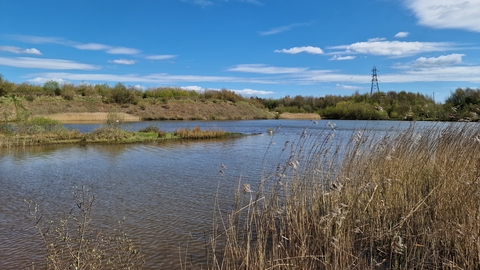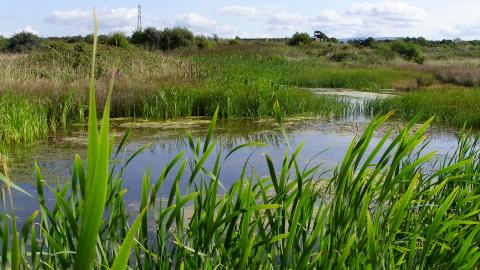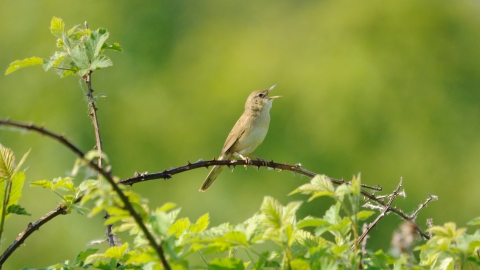Middleton Nature Reserve
Location
Know before you go
Dogs
Dogs permitted only in public access areas
When to visit
Opening times
Open at all times.Best time to visit
Year-roundAbout the reserve
Middleton Nature Reserve is a stunning mosaic of scrub, fen and grassland habitats woven around a network of peaceful pools.
Nature is reclaiming this former industrial site which fell into disuse around 40 years ago. Visit in summer to be spellbound by a regionally important congregation of darting dragonflies: red-veined darter, black-tailed skimmer and emperor dragonflies hunting over the ponds and grasses.
Spring and summer are also perfect times to spot our beautiful breeding birds. Reed warblers chatter and grasshopper warblers churr from deep in the vegetation, while little grebes and reed buntings can also be seen around the water. We are also very excited to see Cetti's warblers both breeding and wintering at Middleton Nature Reserve - listen out for their loud bursts of song.
Winter also brings exciting overwintering species including short-eared owls and water rails, and if you’re lucky you can spot wheatears, whinchats and lesser redpolls as they pass through on migration.
Plant-lovers will relish the opportunity to admire early marsh, southern marsh and northern marsh orchids flourishing in the fens of Middleton Nature Reserve. Elsewhere, the kaleidoscopic colours of yellow-wort and lesser centaury brighten up the thinner soils. Of course, such a stunning array of plants attracts pollinators, including more than 250 species of butterfly and moth. The day-flying burnet companion moth is something to behold.
An unusual species to keep your eyes peeled for is the water shrew, which feeds on invertebrates and even dives right under the water to catch caddisfly and mayfly larvae. Middleton Nature Reserve also has a large population of great crested newts thriving in its waters, the males sporting a fiery orange belly and a spectacular crest right along their backs to their tails.
We manage Middleton Nature Reserve on behalf of Lancaster City Council, and its fantastic collection of wildlife and wildflowers has earned the site Biological Heritage Site status.




